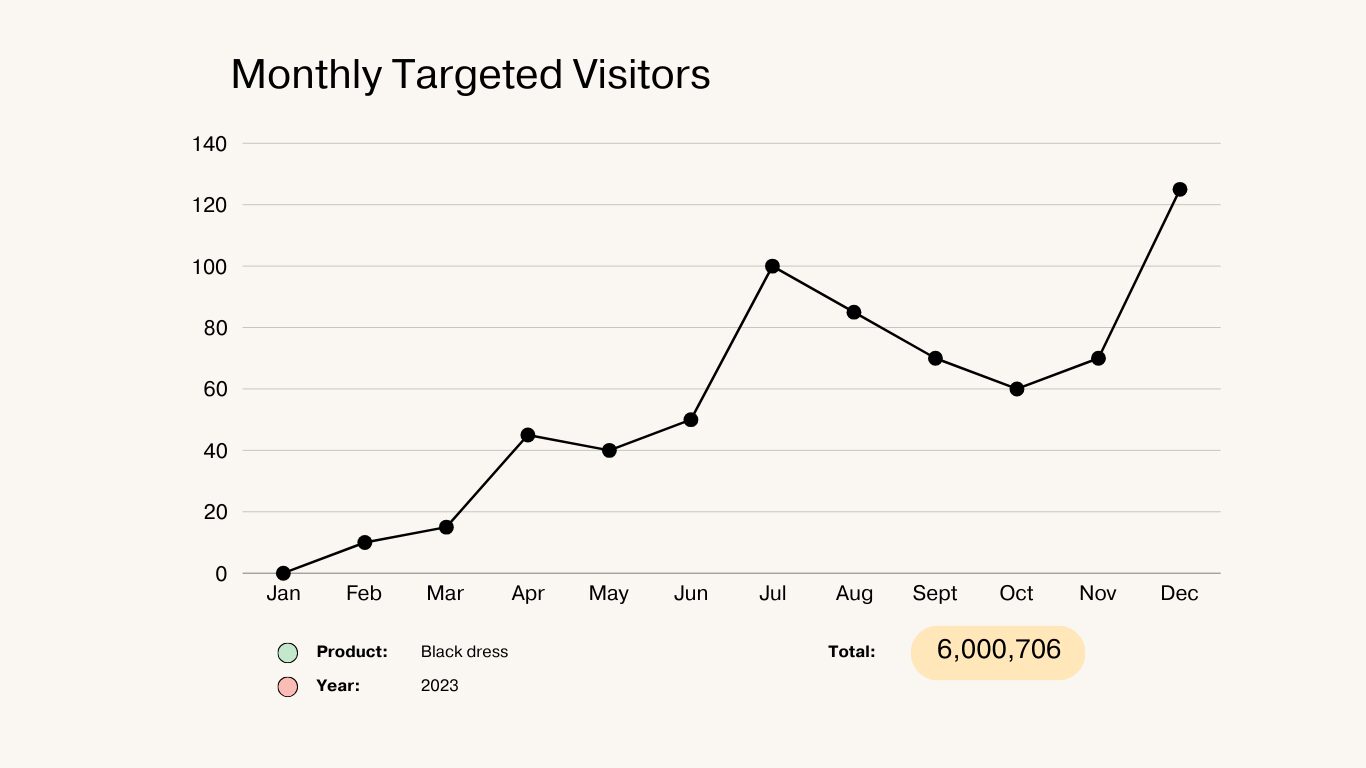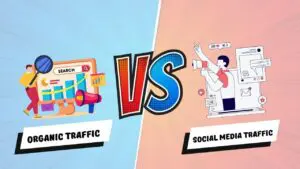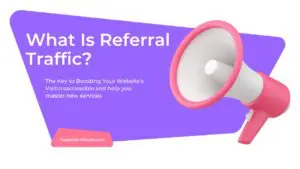Contents
What Are Targeted Visitors?
Understanding Targeted Visitors are individuals who land on your website because they are specifically interested in what you offer. Unlike random web traffic, these visitors are attracted through precise marketing strategies aimed at particular demographics, interests, or behaviors. Essentially, they are the audience most likely to engage with your content, purchase your products, or utilize your services.
Definitions and Key Concepts
- Target Audience: The specific group of people you want to reach with your marketing efforts. This group is defined by various factors such as age, gender, location, interests, and buying behavior.
- Demographic Targeting: Involves tailoring your marketing strategies to meet the needs and preferences of a particular demographic group.
- Behavioral Targeting: Focuses on the online behavior of users, such as their browsing history, purchase history, and interactions with your website.
- Geo-Targeting: A method of delivering content to users based on their geographic location. This is particularly useful for businesses that operate in specific regions or serve local communities.
Benefits of Targeted Visitors
- Higher Conversion Rates: Since targeted visitors are already interested in what you offer, they are more likely to convert into paying customers.
- Improved ROI: Marketing efforts are more cost-effective when aimed at a specific audience, leading to better return on investment (ROI).
- Enhanced User Engagement: Content tailored to the interests and needs of targeted visitors is more likely to engage them, resulting in longer site visits and more interactions.
- Better Customer Insights: By focusing on a specific audience, you can gather more detailed insights into customer preferences and behaviors, helping you refine your marketing strategies.
How It Works
- Identifying Your Target Audience: The first step is to define who your ideal customers are. This involves researching demographics, interests, and behaviors.
- Creating Relevant Content: Develop content that resonates with your target audience. This could be blog posts, videos, social media updates, or email newsletters tailored to their interests.
- Utilizing SEO and Keywords: Optimize your website and content for search engines using keywords that your target audience is likely to use. This improves your visibility in search engine results pages (SERPs).
- Leveraging Social Media: Use social media traffic (Targeted Visitors) platform to reach your target audience. Engage with them through posts, comments, and direct messages to build relationships and drive traffic to your website.
- Running Targeted Ads: Invest in online advertising campaigns that target specific demographics, behaviors, and locations. Platforms like Google Ads and Facebook Ads offer advanced targeting options.
- Monitoring and Adjusting: Use analytics tools to track the performance of your marketing efforts. Monitor key metrics such as traffic sources, conversion rates, and engagement levels. Adjust your strategies based on the data to improve results.
Example
A local bakery wants to attract more customers from its surrounding area. They define their target audience as adults aged 25-45 living within a 10-mile radius who have an interest in baked goods and organic food. The bakery then creates engaging content about their organic ingredients and special offers, optimizes their website for local search terms, and runs Facebook ads targeting people within the specified demographic and geographic area. By focusing their efforts on this well-defined group, the bakery sees an increase in foot traffic and online orders from local customers.
Understanding Targeted Visitors can significantly enhance your marketing efforts. By focusing on those who are most likely to engage with your content and convert into customers, you can improve your ROI, boost engagement, and drive long-term growth for your business.
How to Buy Targeted Visitors: A Step-by-Step Guide
In the competitive digital landscape, buying targeted visitors can be a strategic way to increase traffic, improve engagement, and boost conversions on your website. Here’s a comprehensive guide on how to buy targeted visitors effectively.
1. Define Your Target Audience
Before you start purchasing traffic, it’s crucial to have a clear understanding of who you want to attract. Consider factors such as:
- Demographics: Age, gender, income, education, etc.
- Geographics: Location, whether local, regional, national, or international.
- Psychographics: Interests, values, lifestyle, etc.
- Behavior: Online habits, purchase history, and engagement patterns.
2. Choose Reputable Traffic Providers
Selecting a trustworthy targeted web traffic provider is essential to ensure the quality of the visitors. Here are some popular and reputable platforms:
- Google Ads: Offers a variety of ad formats including search, display, and video ads to reach specific audiences.
- Facebook Ads: Allows detailed targeting based on demographics, interests, and behaviors.
- Bing Ads: An alternative to Google Ads with similar targeting options.
- Targeted Visitors: Content discovery networks that promote your content on high-traffic websites.
- LinkedIn Ads: Ideal for B2B targeting with options to target professionals by job title, industry, and more.
- Targeted Web Traffic (Visitors): Utilize content discovery networks to showcase your content on high-traffic websites, driving engaged and relevant visitors to your site.
- Mrate: Boost website traffic organically. Utilize content discovery platforms to increase the visibility of your content and reach engaged audiences on popular websites
3. Set Clear Objectives
Define what you want to achieve with your targeted traffic purchase. Objectives may include:
- Increasing website visits: Driving more traffic to your site.
- Boosting conversions: Encouraging visitors to complete desired actions like making a purchase or signing up for a newsletter.
- Enhancing engagement: Increasing time spent on site, page views, or social shares.
4. Create Compelling Ads
Develop ads that resonate with your target audience. Tips for creating effective ads include:
- Eye-catching visuals: Use high-quality images or videos.
- Clear call-to-action (CTA): Tell users exactly what you want them to do (e.g., “Sign Up Now” or “Learn More”).
- Relevant messaging: Ensure your ad copy aligns with the interests and needs of your target audience.
5. Optimize Landing Pages
Make sure the landing pages where your visitors arrive are optimized for conversions. Key elements include:
- Clear headlines: Convey the main benefit or offer.
- Engaging content: Provide valuable information that is relevant to the ad.
- Easy navigation: Ensure a smooth user experience with intuitive navigation.
- Strong CTA: Highlight the next step you want visitors to take.
6. Set a Budget and Bidding Strategy
Determine how much you are willing to spend on your campaign. Consider:
- Daily or total budget: Set limits to control spending.
- Bidding strategy: Choose between options like cost-per-click (CPC), cost-per-thousand-impressions (CPM), or cost-per-acquisition (CPA).
7. Monitor and Optimize Campaigns
Regularly review the performance of your campaigns. Use analytics tools to track metrics such as:
- Traffic sources: Identify which channels are driving the most visitors.
- Conversion rates: Measure the percentage of visitors taking desired actions.
- Engagement metrics: Monitor time on site, bounce rate, and page views.
8. Adjust and Refine Strategies
Based on the data collected, make necessary adjustments to improve performance. This could involve:
- A/B testing: Experiment with different ad creatives, headlines, and CTAs.
- Audience segmentation: Refine targeting to focus on the most responsive segments.
- Bid adjustments: Increase or decrease bids based on performance.
Example: Buying Targeted Traffic for an Online Store
Suppose you run an online store selling eco-friendly products. Here’s how you might approach buying targeted visitors:
- Define Audience: Target environmentally conscious adults aged 25-45, living in urban areas, interested in sustainability.
- Choose Provider: Use Facebook Ads to leverage its detailed targeting options.
- Create Ads: Develop visually appealing ads highlighting eco-friendly benefits, with a CTA like “Shop Now.”
- Optimize Landing Page: Ensure your landing page showcases popular products with clear CTAs.
- Set Budget: Allocate a daily budget of $50 with a CPC bidding strategy.
- Monitor Performance: Track clicks, conversions, and engagement through Facebook Ads Manager.
- Adjust Strategies: Based on performance, tweak ad creatives and audience segments to improve results.
By following these steps, you can effectively buy targeted visitors that are more likely to engage with your content, convert into customers, and contribute to your business growth.






